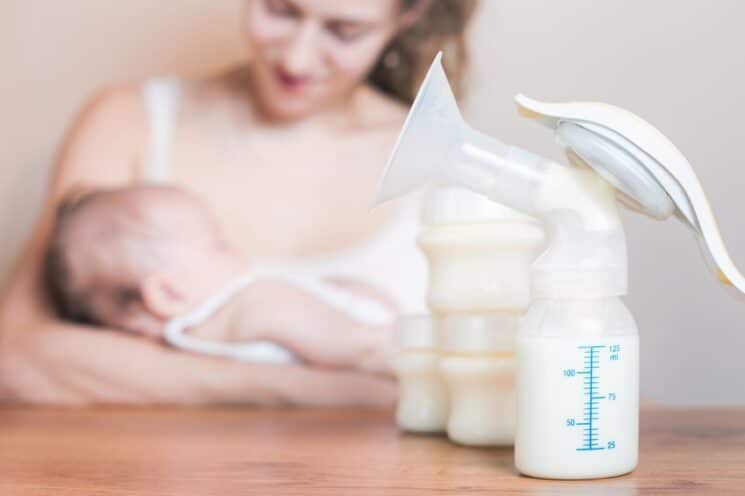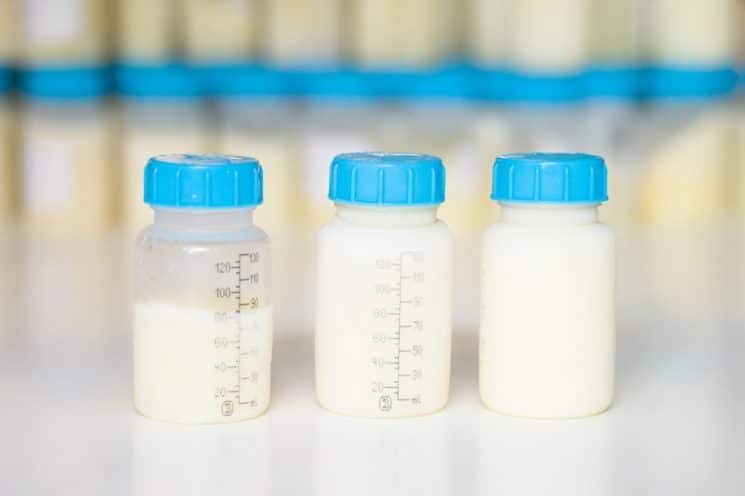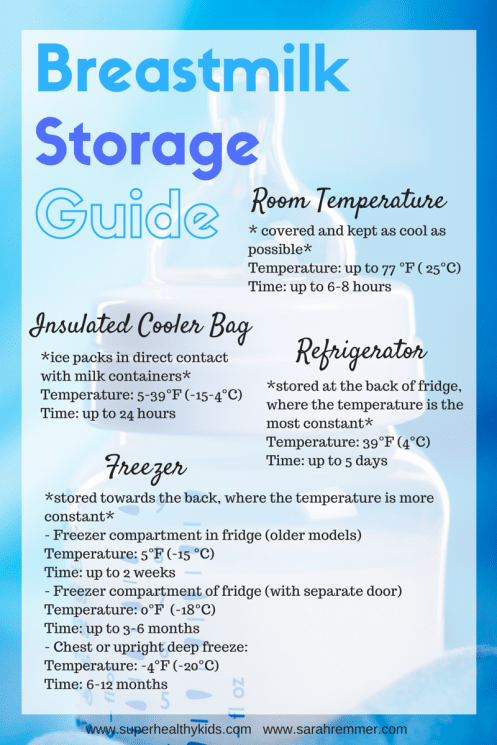How to Safely Store Breastmilk

Whether you’re a nursing Mom returning to work, seeking a little bit of freedom to go out without baby in tow, or just want the option of feeding your baby a bottle instead of nursing, you might be wondering how to safely store your breastmilk, so that you maximize its nutrition and minimize waste.
After all, it is liquid GOLD!
If you’re like me and depend on your stored breastmilk to nourish your baby, read on to learn how to handle and store your breastmilk safely, according to the most up-to-date guidelines:

Preparing to express/pump and collecting breastmilk:
- Always wash your hands prior to expressing or handling breastmilk
- When expressing/pumping milk, make sure to collect it in clean or sanitized bottles with tight screw caps, nursing bottles, or freezer-safe milk storage bags. Avoid using formula bottle bags or regular storage bags, as they tend to leak easily and don’t always seal properly.
- Always label your bottles/bags with the date that it was expressed (so that you can use oldest milk first) and add your child’s name if you are giving the milk to a caregiver
- Avoid adding freshly expressed milk to previously frozen milk (it’s best not to mix), and discard milk from a bottle that was fed but not finished (don’t put back in the fridge to use later).
- Clean your pump supplies thoroughly after each use
Thawing Breastmilk:
- Thaw frozen breastmilk by transferring it to the refrigerator, or by running the bottle or bag under warm water (or placing it in a bowl of warm water).
- Do not use the microwave to thaw or heat breastmilk. Microwave ovens don’t heat every (this could lead to scalding the baby), and they can also damage the breastmilk and its nutrients.
- Do not re-freeze breastmilk one it’s thawed.
Storing breastmilk:
Room temperature (counter/table):
Container should be kept covered and as cool as possible
- Temperature: up to 77 °F or 25°C
- Time: up to 6-8 hours
Insulated cooler bag:
Make sure that ice packs are in direct contact with milk the entire time and minimize opening the bag
- Temperature: 5-39°F or -15 to 4°C
- Time: up to 24 hours
Refrigerator:
Store at the back of the main compartment in fridge, where the temperature is the most constant.
- Temperature: 39°F or 4°C
- Time: up to 5 days
Freezer:
Store towards the back of the freezer where the temperature is more constant. Note that milk stored for longer periods of time (within these ranges) will be safe, however some of the fat within the milk may degrade, resulting in a lower quality.
-
Freezer compartment in fridge (older models)
- Temperature: 5°F or -15°C
- Time: up to 2 weeks
-
Freezer compartment of fridge (with separate door)
- Temperature: 0°F or -18°C
- Time: up to 3-6 months
-
Chest or upright deep freeze:
- Temperature: -4°F or -20°C
- Time: 6-12 months
Information comes from the CDC (Centre for Disease Control) Guidelines for handling and storing breastmilk

If you find this post helpful, you might also enjoy reading about the top tips for breastfeeding Moms returning to work, and tips to prevent and manage excessive spitting up in baby


Sarah Remmer is a registered dietitian and mom of three. She writes all about kids nutrition over on her blog Nutrition From Stork to Fork. For free daily advice on nutrition for your little ones, follow Sarah on Facebook.

Natalie Monson
I'm a registered dietitian, mom of 4, avid lover of food and strong promoter of healthy habits. Here you will find lots of delicious recipes full of fruits and veggies, tips for getting your kids to eat better and become intuitive eaters and lots of resources for feeding your family.
Learn More about Natalie
I am going to be returning to work soon where I drive over an hour each way. Is it safe to refrigerate it after pumping at work. Transfer it home in a cooler and then freeze or refrigerate it when I get home?
There may be circumstances when the mother is unable to breastfeed the baby. Storing breast milk for later feeding is the best solution. Here’s everything you need to know about storing breast milk.
https://www.parentcircle.com/article/everything-you-need-to-know-about-storage-of-breast-milk/
PART of this and all info on breast milk should include the issue of high lipase when storing. If you freeze and don’t check you could lose lol your storage if you have high lipase. I was not told this and mine would sour after freezing if I didn’t heat first. I didn’t find this out until losing 2000 ounces. My so. Couldn’t drink due to sour taste and reflux. It’s so sad women are not given this information.
We were little sceptical whether to pump or not after reading mixed reviews however I would like to admit that the product makes life easier for a nursing mom.